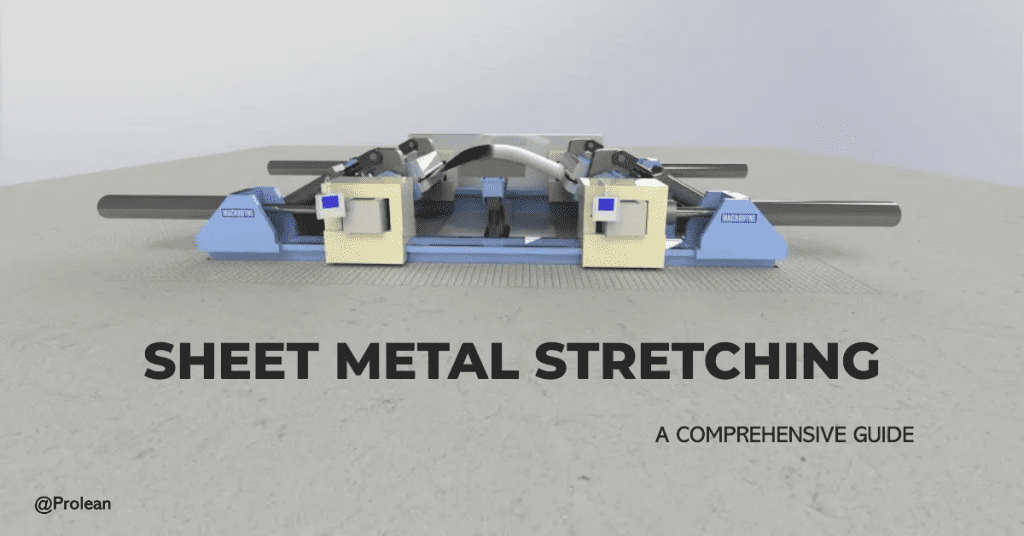
Sheet metal stretching is a critical process in the manufacturing industry, utilized for shaping various metal components. It is accomplished by subjecting the metal sheet to forces that cause it to elongate and change shape. This process has been used for centuries in various applications, such as creating automobile parts, aerospace components, and consumer products.
In this comprehensive guide, We will explore the science behind sheet metal stretching, including techniques, equipment, and best practices, as well as its applications in different industries.
Sheet Metal Stretching
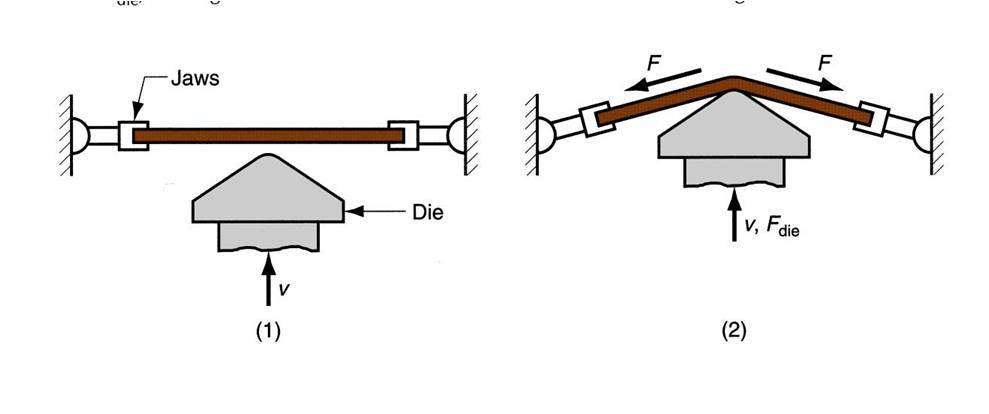
The science behind sheet metal stretching is rooted in the fundamental principles of material science and engineering. When a metal sheet is subjected to stretching forces, its atomic structure undergoes changes, resulting in the elongation and deformation of the material.
At the atomic level, metal sheets consist of a lattice of atoms arranged in a specific pattern. When forces are applied, the bonds between these atoms are altered, allowing them to move and rearrange themselves. This process, known as plastic deformation, enables the sheet to change shape and stretch without breaking.
However, there is a limit to the amount of stretching a metal sheet can endure before it reaches its breaking point, also known as the ultimate tensile strength (UTS). Once the UTS is exceeded, the material will fracture and fail. Therefore, understanding the science behind sheet metal stretching is crucial for manufacturers to control and optimize the process effectively.
Sheet Metal Forming Techniques
There are several sheet metal forming techniques used in the manufacturing industry, each with its advantages and limitations. These methods can be broadly classified into three categories: stretching, bending, and shearing.
| Forming Technique | Description | Examples |
|---|---|---|
| Stretching | Lengthening and thinning the metal sheet by applying tensile forces | Deep drawing, stretch forming, rubber pad forming |
| Bending | Applying forces to the metal sheet in a specific direction, causes it to bend and form an angle | Air bending, bottoming, coining |
| Shearing | Cutting the metal sheet by applying forces that cause the material to separate along a predetermined line | Guillotine cutting, rotary shearing, slitting |
Factors Affecting the Metal Stretching Process
Several factors can influence the metal stretching process, impacting the final product’s quality and properties. These factors include:
1 Material Type
The type of material being stretched plays a crucial role in determining the stretching process’s success. Different metals have unique mechanical properties, such as tensile strength, ductility, and hardness, which can affect the stretching process. For example, aluminum is more ductile and easier to stretch than steel, requiring less force to achieve the desired shape.
2 Material Thickness
The thickness of the metal sheet also plays a significant role in the stretching process. Thicker sheets generally require more force to stretch and are more prone to tearing or fracturing during the process. Additionally, the thickness uniformity of the metal sheet is essential to ensure consistent stretching and prevent defects.
3 Tooling and Equipment
The quality and design of the tools and equipment used in the stretching process can significantly impact the final product. Properly designed and maintained tools can help ensure uniform stretching, minimize defects, and improve the overall efficiency of the process.
4 Lubrication
Lubrication is an essential factor in the stretching process, as it helps reduce friction between the metal sheet and the stretching tools. By minimizing friction, lubrication prevents surface defects and ensures smooth, consistent stretching.
Common Types of Metal Stretching Equipment
There is a wide array of equipment used to perform sheet metal stretching, each designed for specific applications and materials. Some common types of metal stretching equipment include:
| Type of Equipment | Description | Applications |
|---|---|---|
| Stretch Presses | Hydraulic or mechanical machines used for controlled stretching of metal sheets | Automotive, aerospace, construction, consumer products |
| Rubber Pad Forming Machines | Utilizes a flexible rubber pad to apply pressure on the metal sheet, conforming it to the shape of a rigid die | Consumer products, aerospace |
| Roll Stretching Machines | Uses a series of rollers to gradually stretch the metal sheet | Thin metal sheets, roofing materials |
Advantages and Limitations of Sheet Metal Stretching
Sheet metal stretching offers several advantages over other forming techniques. These benefits include:
- Versatility: Sheet metal stretching can be used to form a wide range of shapes and contours, making it suitable for various industries and applications.
- Uniformity: Properly executed stretching processes can result in uniform material thickness and minimal surface defects, ensuring high-quality final products.
- Reduced Tooling Costs: Stretching processes, such as rubber pad forming, can minimize tooling costs by eliminating the need for specialized tooling.
- Increased Material Utilization: Sheet metal stretching can help reduce material waste by allowing manufacturers to create complex shapes with minimal scrap.
However, sheet metal stretching also has some limitations:
- Material Limitations: Not all metals are suitable for sheet metal stretching. Brittle materials with low ductility, such as some high-strength steel, may not be suitable for this process.
- Risk of Fracturing: If not properly controlled, the stretching process can result in fractures or tears in the material, especially when dealing with thicker sheets or materials with low ductility.
- Potential for Residual Stresses: Stretching can introduce residual stresses in the material, which may require subsequent stress-relief treatments.
Applications of Sheet Metal Stretching in Various Industries
Sheet metal stretching has a wide range of applications across various industries, including:
| Industry | Applications |
|---|---|
| Aerospace | Lightweight, high-strength components, such as wing skins, fuselage panels, and structural members |
| Automotive | Body panels, bumpers, and door skins, allow for intricate shapes and contours while maintaining material strength and durability |
| Consumer Products | Appliances, electronics, and furniture, creating aesthetically pleasing designs with complex shapes and contours |
| Construction and Architecture | Decorative panels, roofing materials, and structural components, allow for unique, visually appealing designs while maintaining structural integrity |
Best Practices for Sheet Metal Stretching Process
To optimize the sheet metal stretching process and ensure high-quality final products, manufacturers should adhere to the following best practices:
- Material Selection: Choose the appropriate material for the stretching process based on the desired final product properties and the material’s mechanical properties.
- Material Preparation: Ensure that the metal sheet is clean, free of surface defects, and has uniform thickness before the stretching process.
- Proper Tooling and Equipment: Use well-designed and maintained tools and equipment to minimize defects and optimize the stretching process efficiency.
- Lubrication: Apply appropriate lubrication to the metal sheet and tooling to minimize friction and prevent surface defects.
- Process Control: Monitor and control the stretching process to ensure consistent results and minimize the risk of fractures or tears in the material.
- Post-Forming Inspection: Inspect the stretched metal sheet for defects, such as fractures or tears, and assess the material properties to ensure they meet the desired specifications.
Sheet Metal Stretching and Other Forming Services at ProleanTech
ProleanTech is a leading provider of sheet metal stretching and other forming services, catering to various industries and applications. With a team of skilled professionals and state-of-the-art equipment, ProleanTech delivers high-quality, precision sheet metal components that meet the demands of today’s competitive marketplace.
Whether you require sheet metal stretching, bending, or shearing services, ProleanTech has the expertise and resources to help bring your project to fruition. By partnering with ProleanTech, you can ensure that your sheet metal components are manufactured to the highest standards, resulting in durable, high-performance products that meet the needs of your industry. Please feel free to contact us for more detail.
Conclusion
Sheet metal stretching is a vital process in the manufacturing industry, allowing for the creation of intricate shapes and contours in metal components. By understanding the science behind this process and adhering to best practices, manufacturers can optimize their processes and achieve high-quality, durable products that meet the requirements of various industries.
With the help of advanced equipment and skilled professionals, companies like ProleanTech can provide sheet metal stretching and other forming services that cater to the unique demands of today’s competitive marketplace. By partnering with such experts, businesses can stay ahead of the curve and continue to innovate in an ever-changing industry landscape.
FAQ’s
What is sheet metal stretching?
Sheet metal stretching is a process used to shape metal components by subjecting the metal sheet to forces that cause it to elongate and change shape.
What factors affect the sheet metal stretching process?
Factors affecting the sheet metal stretching process include material type, material thickness, tooling and equipment, and lubrication.
What are the advantages of sheet metal stretching over other forming techniques?
Some advantages of sheet metal stretching include versatility, uniformity, reduced tooling costs, and increased material utilization.
What industries commonly use sheet metal stretching?
A: Sheet metal stretching is commonly used in industries such as aerospace, automotive, consumer products, and construction and architecture.
What are some best practices for the sheet metal stretching process?
A: Best practices for the sheet metal stretching process include material selection, material preparation, proper tooling and equipment, lubrication, process control, and post-forming inspection.

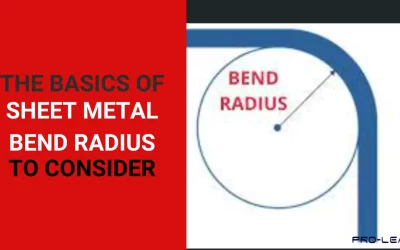
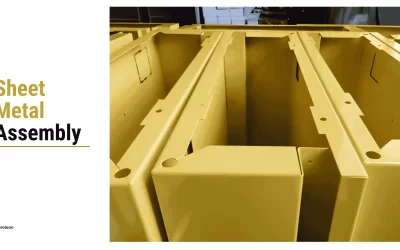
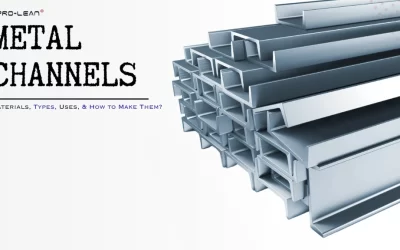
0 Comments